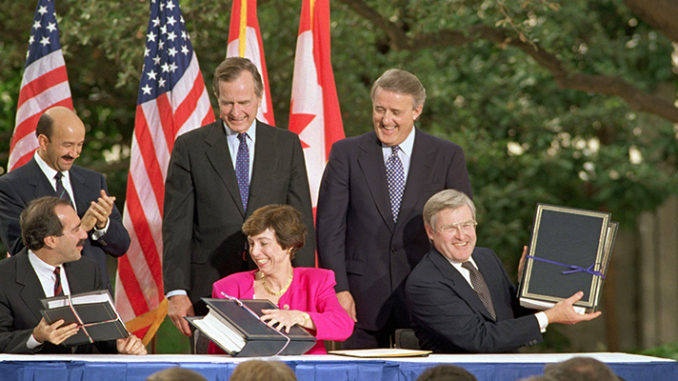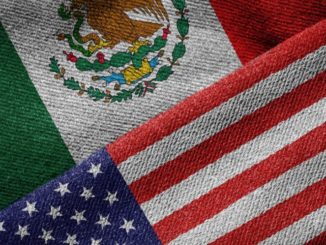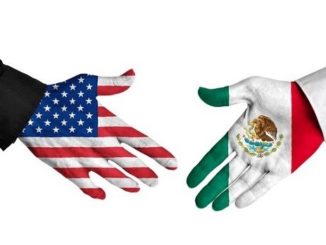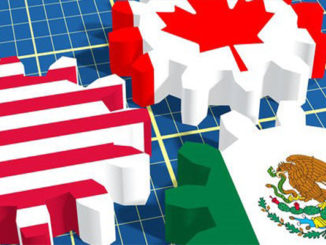
Back when conservatives exalted free markets, our neighbor to the south was a vital ally.
by Mario Del Pero and Vanni Pettinà
On June 10, 1991, an inspired Elliott Abrams, returning from a ballgame with his kids in Frederick, Md., wrote to President George H.W. Bush suggesting that it would be a “wonderful adjunct to the US-Mexico Free Trade Agreement if we could somehow get a major league team into Monterrey or Mexico City.” Baseball, wrote the assistant secretary of state for human rights, would be a great “complement to the economic side of North American cooperation.”
Twenty-eight years later, such hopeful optimism about North American cooperation seems long forgotten. Indeed, President Trump recently proposed imposing new tariffs on all Mexican goods to punish Mexico for its alleged inability to curb immigration flows to the United States.
The contrast between Abrams’s inclusive approach to Mexico and the hostility of the current administration, which does not hesitate to blackmail and bully its southern neighbor, is striking. Trump’s behavior shows that the consensus about hemispheric relations seems to have shifted on the American right. Ideas about free trade, and the assumptions about the world that underpinned them, have transformed from cornerstones of Washington’s conservative post-Cold War order to its bête noire. And so has the idea that fostering economic interdependence could further U.S. power in the Western Hemisphere.
Abrams was no liberal. A hawkish neocon convicted over his role in the Iran-contra scandal, he was also accused of systematically covering up human rights abuses in El Salvador and Guatemala during the 1980s Central American conflicts. However, his evocation of baseball diplomacy is a reminder of a now-distant era, when the hemispheric strategy of the U.S. right, even in its most radical iterations, still saw the bilateral relationship with Mexico as an asset rather than a threat to the country’s national security.
The transition to an increasingly deregulated form of financial and commercial interdependence had been underway at least from the early 1970s. But by the end of the 1980s, with the Cold War waning and the United States assuming unquestioned primacy in the world order, Washington accelerated plans for a U.S.-led economic integration of the Americas. The United States’ strategy of hemispheric economic integration aimed to benefit the American economy while strengthening it vis-a-vis its rivals.
Abrams’s logic reflected the assumption that economic integration would quickly spread across North and South America, and would be accelerated by cultural integration, helping the United States to reassert its hemispheric hegemony. A free-trade agreement with Mexico, soon to include Canada and become NAFTA, represented (or at least hoped to represent) the first step of a process that would rapidly extend to the rest of the Americas. NAFTA was the template for a U.S.-led Pan-American scheme: a U.S.-driven process of market expansion and integration that would inevitably benefit the strongest and most advanced economy of the hemisphere.
When introducing the idea of NAFTA, Bush did not draw from the many past attempts to foster the economic opening and promote the “modernization” of U.S. southern neighbors. Instead, he had the boldness to invoke the mantle of Simón Bolívar — El Libertador of the South American wars of independence of the early 19th century — to pitch his integrationist projects. NAFTA, the president argued during the 1992 summit of the Organization of American States, represented a “giant step” toward making the dream of “Simón Bolívar, the liberator” a reality: an America that, in Bolívar’s words, was bound to be “united in heart, subject to one law, and guided by the torch of liberty.”
Opening markets and integrating economies, Bush maintained, would benefit the richest and most powerful country (the United States) while strengthening pro-U.S. elites in Latin America and consolidating the democratic and market transitions already underway.
In Bush’s telling, hemispheric integration through U.S. leadership seemed to offer significant benefits for the United States. It would foster trade and growth through an ever-expanding market while guaranteeing profitable opportunities for U.S. investments. It would further economic liberalization and encourage countries to abandon the nationalized economic practices that U.S. policymakers had long criticized. And it would strengthen political leaders in Latin America who supported U.S. free trade and deregulatory policies, and sided with Washington on the evolving key geopolitical issues.
Nearly three decades later, we can confidently say that the project has not fulfilled its promises. In the United States, resistance from a nationalist and anti-integrationist right was strong from the beginning, as both Pat Buchanan’s and Ross Perot’s shockingly popular 1992 presidential campaigns proved.
The perceived uneven effects of NAFTA have strengthened and possibly radicalized that wing of conservatism over the past 25 years, as well as politicians who rail against economic integration in Mexico. South of the Rio Grande, NAFTA has contributed to an uneven process of economic development, enriching some but proving unable to lift millions of Mexicans out of poverty. In the United States, it has accelerated the dislocation of several economic sectors (textiles and electrical appliances immediately come to mind) and fueled a discontent on which Trump has built his political and electoral fortunes.
Over the long term, these imbalances, rather than assuring the consolidation of a trustworthy, pro-U.S. political elite, have fostered the rise of a political leader, Andrés Manuel López Obrador, who has made Bush’s vision of hemispheric economic integration one of the main targets of his political agenda. The Mexican president has spent his political career railing against free trade and arguing in favor of helping those sectors of the Mexican economy, such as local manufacturing or small farming, displaced by NAFTA and economic liberalization.
The rise of López Obrador indicates how NAFTA has disappointed. Although there is legitimate debate among scholars over NAFTA’s impact, there seems to be consensus that it did not fulfill its ambitious promises to spur job growth in the United States, correct wage imbalances between the two countries, and improve labor and environmental standards in Mexico, particularly along the border.
And in its view of its southern neighbor, the American right has moved from sanguine dreams of porous borders, where baseball could be exported along with machineries and investments, to the current dystopian vision of walls, deportations and separation: from the sunny idea that laissez-faire, when unbound, is an inclusive and progressive force to a gloomy understanding of international relations (and economics) as a brutal struggle and a “zero-sum” game. Perhaps a good point of departure for the future would be to finally recognize Mexico as an equal partner, and not just as an ancillary member of U.S. schemes.
Mario Del Pero Mario Del Pero is professor of international history at SciencesPo, Paris. He is the author of “Era Obama.”
Vanni Pettinà is associate professor of Latin American international history at the Center for Historical Studies of El Colegio de México and author of “Historia Mínima de la Guerra Fría.”



